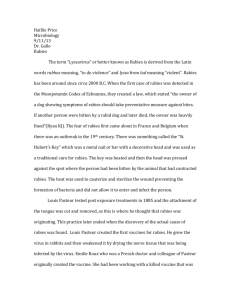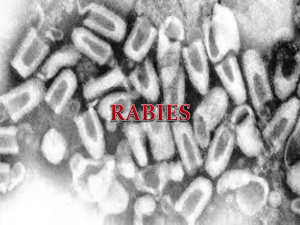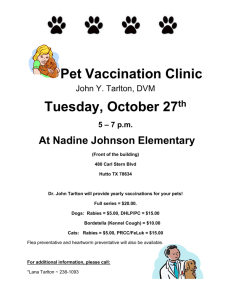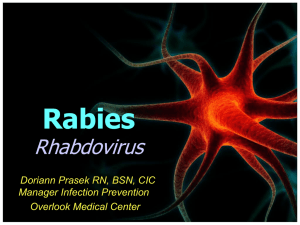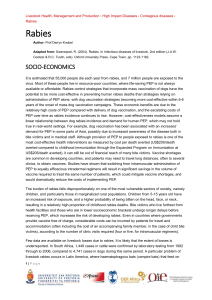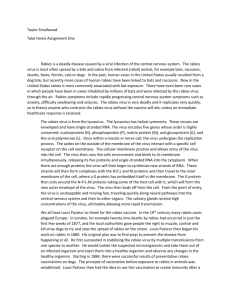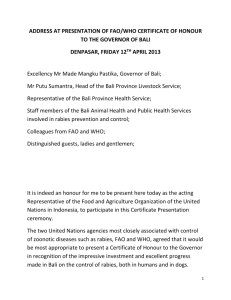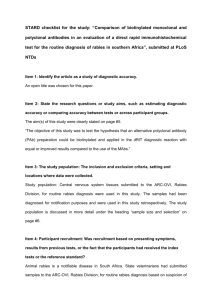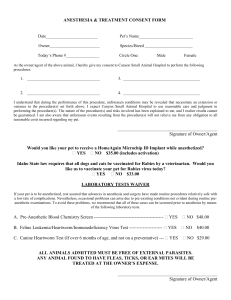Rabies Suspect Patients - Alberta Veterinary Medical Association
advertisement
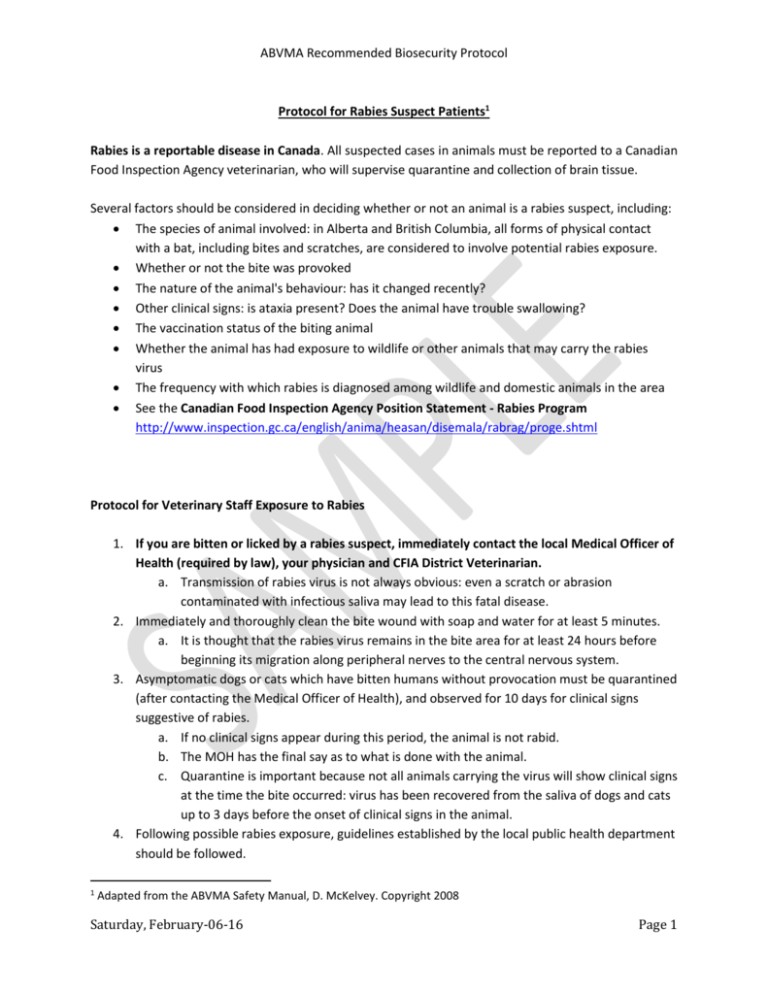
ABVMA Recommended Biosecurity Protocol Protocol for Rabies Suspect Patients1 Rabies is a reportable disease in Canada. All suspected cases in animals must be reported to a Canadian Food Inspection Agency veterinarian, who will supervise quarantine and collection of brain tissue. Several factors should be considered in deciding whether or not an animal is a rabies suspect, including: The species of animal involved: in Alberta and British Columbia, all forms of physical contact with a bat, including bites and scratches, are considered to involve potential rabies exposure. Whether or not the bite was provoked The nature of the animal's behaviour: has it changed recently? Other clinical signs: is ataxia present? Does the animal have trouble swallowing? The vaccination status of the biting animal Whether the animal has had exposure to wildlife or other animals that may carry the rabies virus The frequency with which rabies is diagnosed among wildlife and domestic animals in the area See the Canadian Food Inspection Agency Position Statement - Rabies Program http://www.inspection.gc.ca/english/anima/heasan/disemala/rabrag/proge.shtml Protocol for Veterinary Staff Exposure to Rabies 1. If you are bitten or licked by a rabies suspect, immediately contact the local Medical Officer of Health (required by law), your physician and CFIA District Veterinarian. a. Transmission of rabies virus is not always obvious: even a scratch or abrasion contaminated with infectious saliva may lead to this fatal disease. 2. Immediately and thoroughly clean the bite wound with soap and water for at least 5 minutes. a. It is thought that the rabies virus remains in the bite area for at least 24 hours before beginning its migration along peripheral nerves to the central nervous system. 3. Asymptomatic dogs or cats which have bitten humans without provocation must be quarantined (after contacting the Medical Officer of Health), and observed for 10 days for clinical signs suggestive of rabies. a. If no clinical signs appear during this period, the animal is not rabid. b. The MOH has the final say as to what is done with the animal. c. Quarantine is important because not all animals carrying the virus will show clinical signs at the time the bite occurred: virus has been recovered from the saliva of dogs and cats up to 3 days before the onset of clinical signs in the animal. 4. Following possible rabies exposure, guidelines established by the local public health department should be followed. 1 Adapted from the ABVMA Safety Manual, D. McKelvey. Copyright 2008 Saturday, February-06-16 Page 1 ABVMA Recommended Biosecurity Protocol a. Immune globin is not usually given if the person has been previously vaccinated against rabies with a human diploid cell vaccine. b. Optimally, treatment should be started within 24 hours of the bite. Prophylaxis is therefore usually started before the diagnosis of rabies has been confirmed histologically (from examination of the animal's brain). 5. Even persons who have been previously vaccinated against rabies should receive prophylactic treatment following possible exposure to rabies. a. Persons who had previously received full pre- or post-exposure treatment with a potent cell-culture vaccine should be given only two booster doses, either intramuscularly or intradermally, on days 0 and 3, but no rabies immunoglobulin (WHO - Guidelines for Post Exposure Prophylaxis) compared to 5 or more vaccine injections plus rabies immunoglobulin, administered to previously unvaccinated persons. Saturday, February-06-16 Page 2
